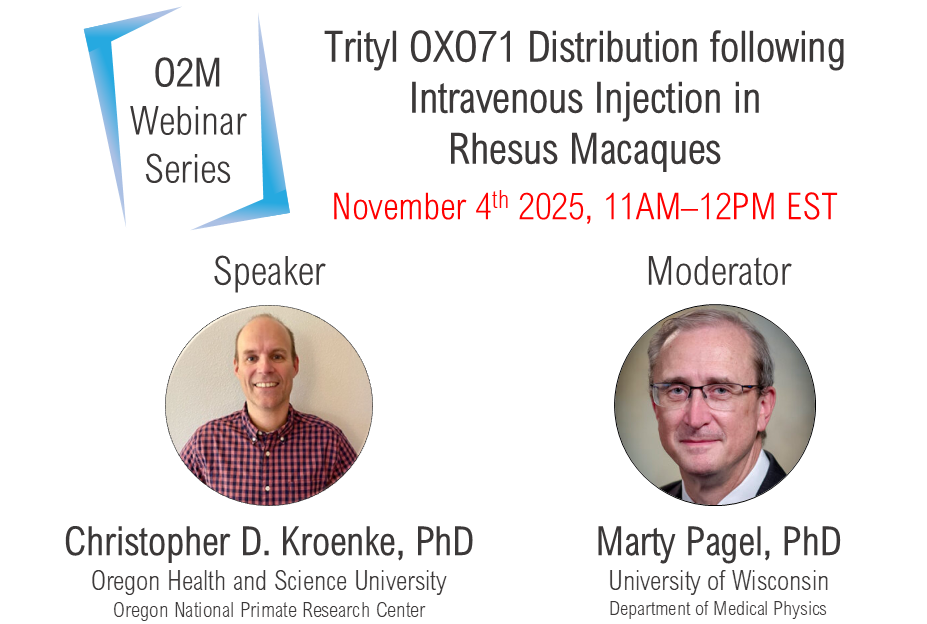Events
O2M Webinar: Dr. Christopher D. Kroenke, PhD – Oregon National Primate Research Center
Trityl OXO71 Distribution following Intravenous Injection in Rhesus Macaques
About the Speaker: Christopher D. Kroenke, PhD, holds affiliate appointments in the OHSU (Oregon Health and Science University) Departments of Biomedical Engineering and Behavioral Neuroscience. His laboratory develops magnetic resonance techniques for characterizing brain throughout the lifespan, with a focus on the fetal developmental period.
About the Webinar: Local tissue oxygen concentration regulation is fundamental to biological processes that govern development, normal physiological function, and pathology. However, only limited experimental methods exist to non-invasively measure pO2 in vivo. Electron paramagnetic resonance (EPR) imaging techniques, utilizing the paramagnetic spin probe Trityl OXO71 (referred to as “trityl”), possess unique capabilities to map pO2 in living organisms. In order to translate previous success utilizing small animal EPR imaging systems to map pO2 in rodent models of human disease, work is underway to develop a large animal EPR imaging system to be used in studies involving nonhuman primates. This presentation will review anticipated applications of trityl-based pO2 imaging in nonhuman primates. It will then present results of pharmacokinetic and distribution studies of trityl following intravenous infusion in three sedated rhesus macaques. Trityl did not perturb physiological parameters such as respiration or pulse rate, supporting the safety of trityl as an imaging agent in translational studies. Plasma concentrations of trityl were observed to be sufficient for pO2 mapping studies for approximately one hour following a bolus intravenous infusion. Ex vivo EPR-based assay of trityl concentration in multiple organs indicate that trityl distribution throughout the body is largely determined by the the blood volume fraction within the sampled tissue, with the exception of the brain. In the brain, trityl concentration was negligible, presumably due to limited exchange of trityl across the blood brain barrier. In the kidney, trityl concentration was high due to renal clearance of the compound. Together, these data indicate that EPR imaging of pO2 will be feasible in nonhuman primate subjects following previously-developed strategies adopted in small animal experiments.


